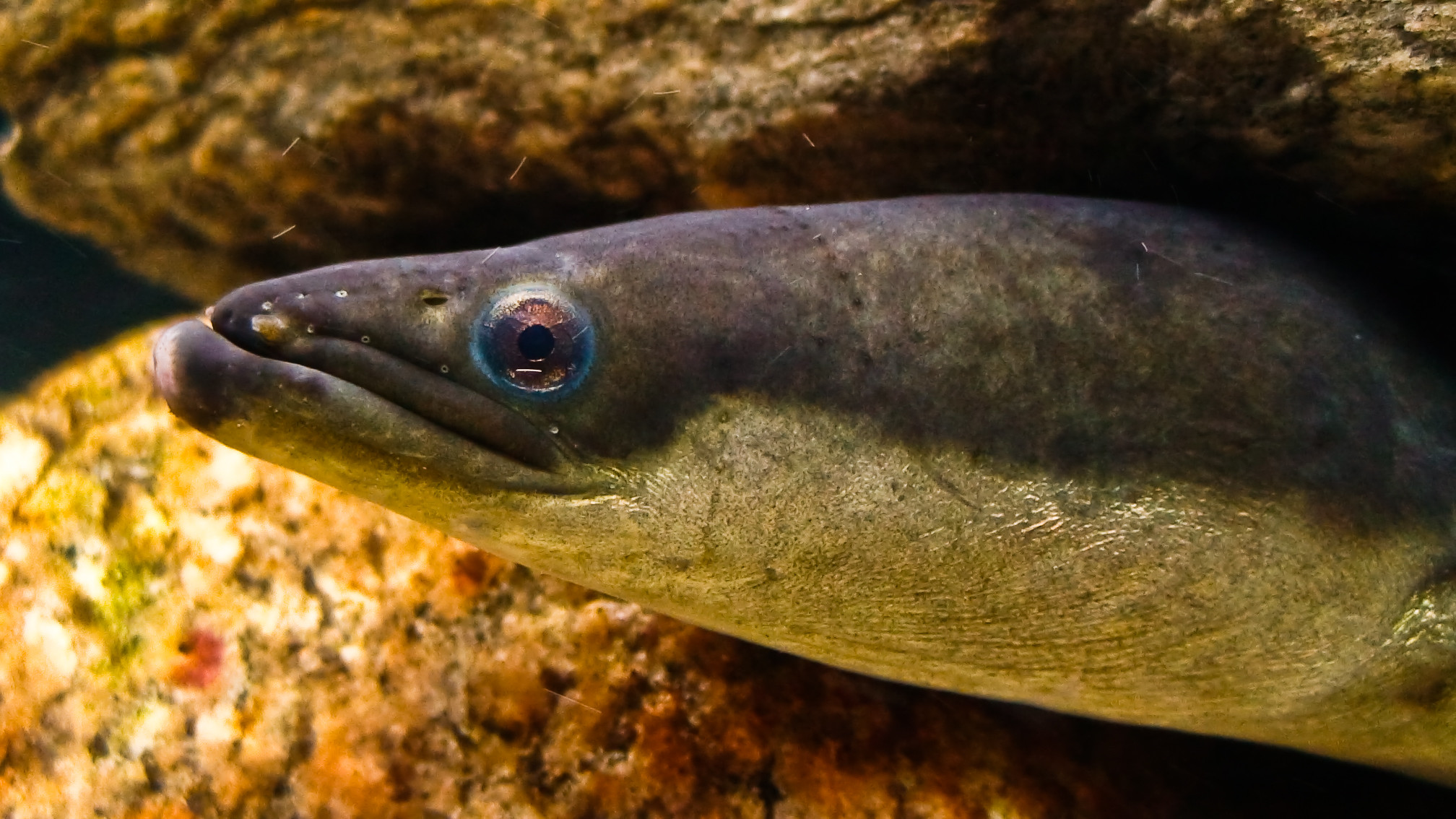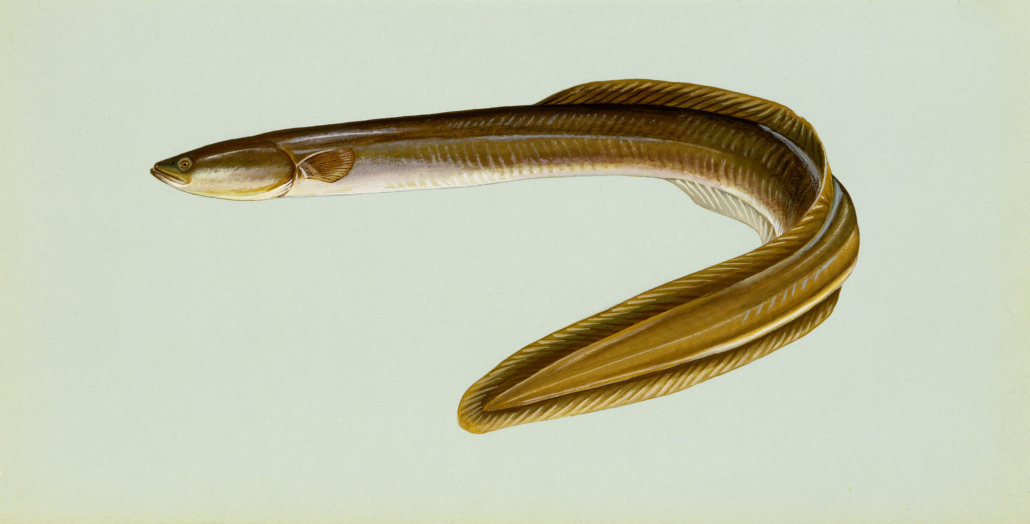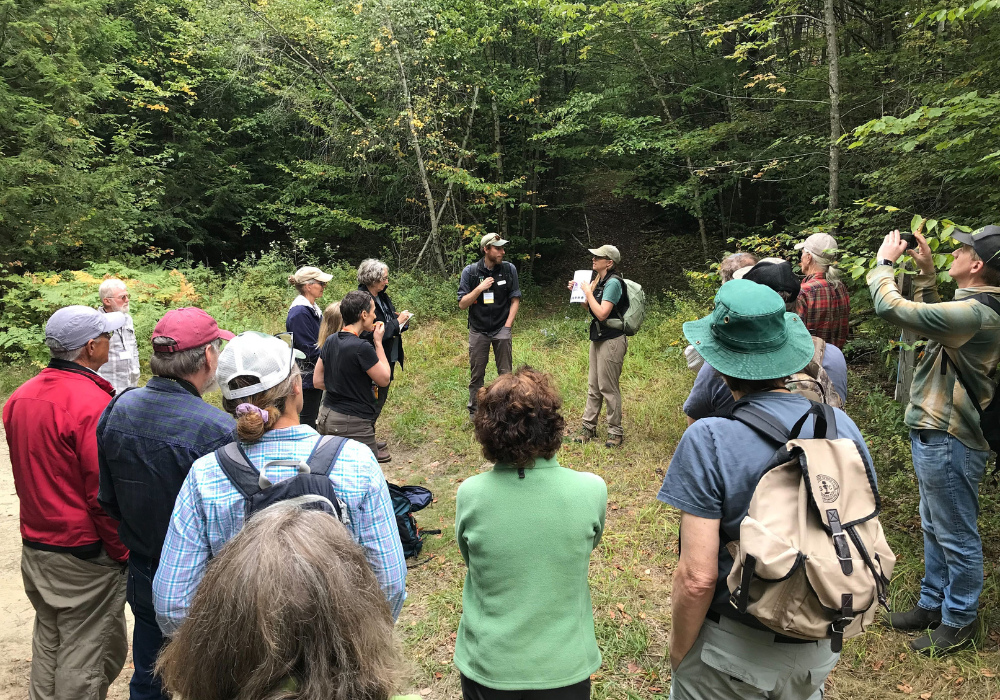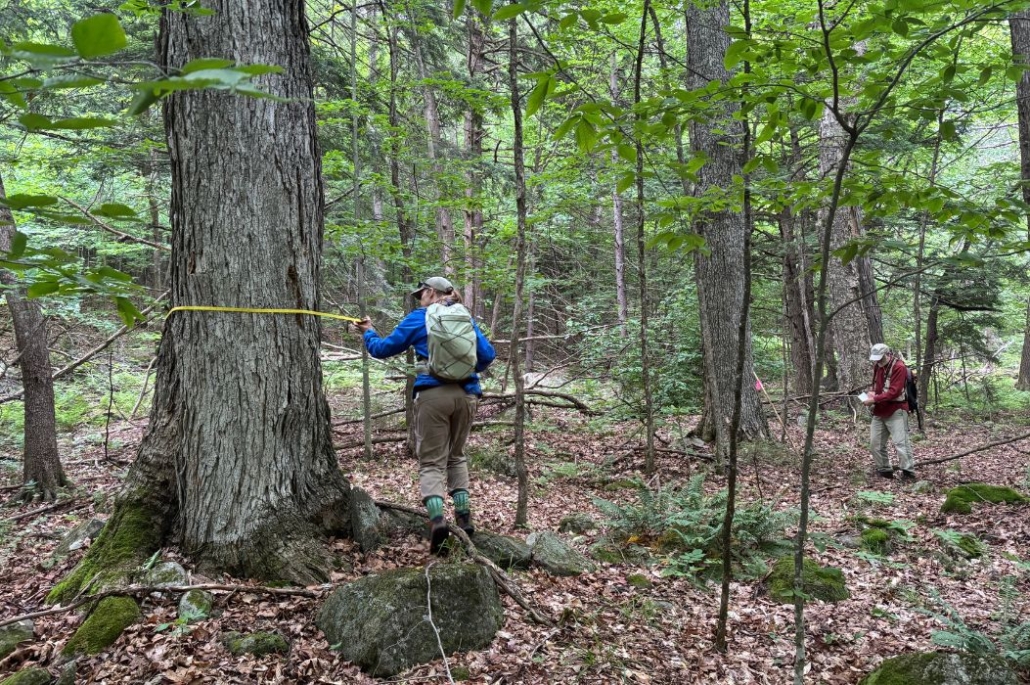The American Eel: Rewilding Watersheds
As an ecologist at Northeast Wilderness Trust (NEWT), I spend most days studying wild lands. As terrestrial creatures ourselves, things often feel more familiar on land—the sights, smells, and colors are welcoming, and the wildlife we encounter is recognizable and often charismatic. But the boundaries of a wilderness preserve do not stop at the river’s edge or the pondshore; they often extend into or encompass these freshwater systems. So every now and then my Wildlands Ecology colleagues and I turn our attention to the creatures that lurk in murky depths—those perhaps less photogenic but equally crucial and intrinsically valuable counterparts to the terrestrial species we know so well.
A Slippery Mystery
The American eel (Anguilla rostrata) is among the most fascinating and yet mystifying of these creatures. Once nearly ubiquitous in freshwater streams and rivers throughout Atlantic watersheds, the American eel is now largely confined to coastal waters and undammed inland waterways. Yet their story is bigger than the familiar tale of abundance severely diminished by human intervention. The American eel has puzzled scientists and naturalists for centuries, with critical details of the species’ biology still shrouded in mystery.
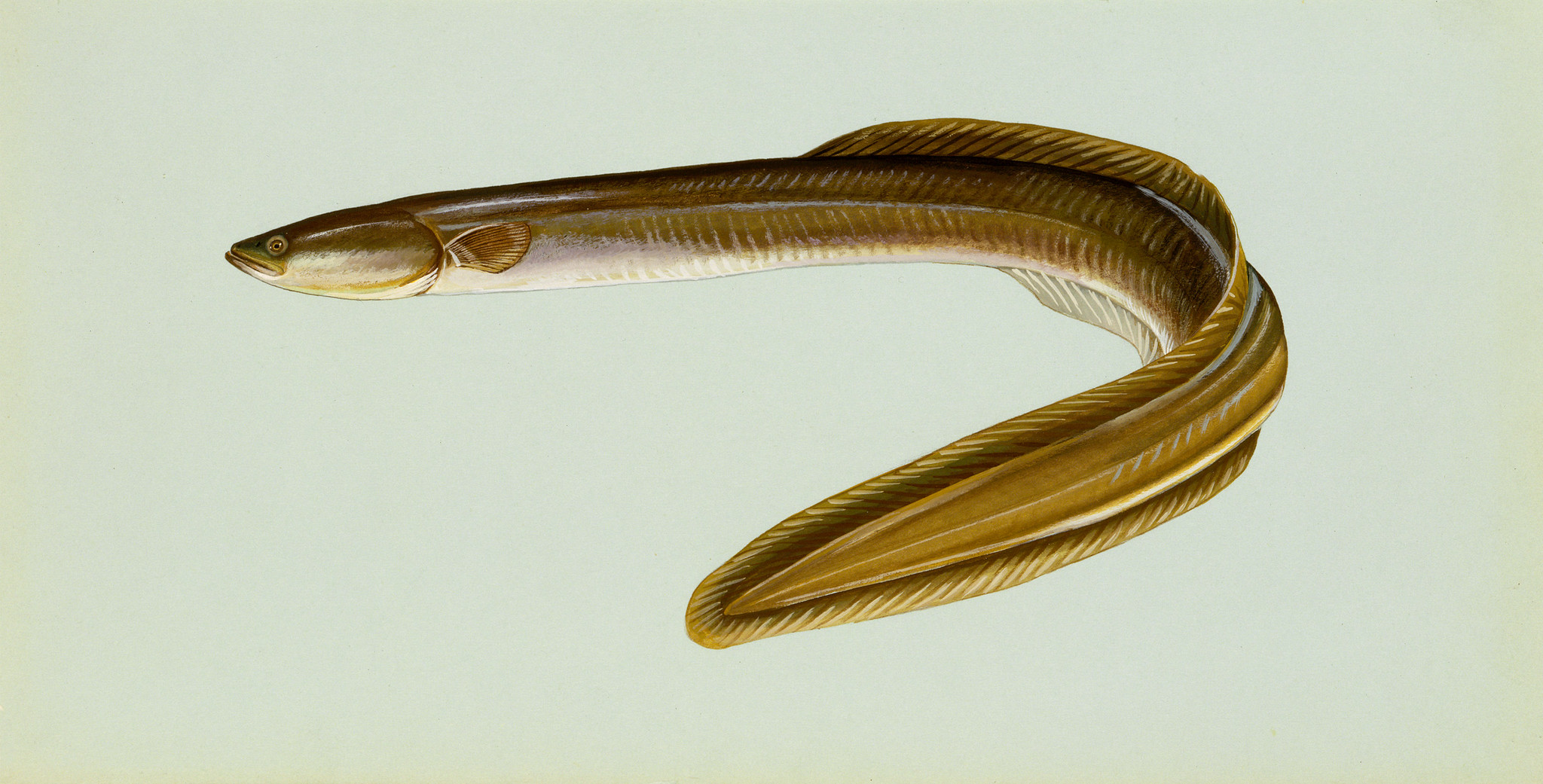
The American eel is North America’s only catadromous fish. They live much of their lives in freshwater (or brackish) environments but must return to the ocean to reproduce. This life cycle inverts that of anadromous fish like salmon, which live primarily in the ocean and return to rivers to spawn.
No one has ever observed eel spawning in the wild, but based on clues from their migration, we know that their life begins in the warm depths of the Sargasso Sea off the U.S. East Coast. There, adult eels spawn, producing tens of millions of eggs, and then perish. From those eggs hatch larvae (leptocephali) shaped like willow leaves, which drift along on ocean currents for months. As the larvae approach the continental shelf, they metamorphose into “glass eels”—transparent, androgynous juveniles—and begin the journey inland toward estuaries and rivers.
Once in fresh or brackish waters, they transform again, this time into elvers, and later into yellow eels, spending years to decades feeding and growing in streams, lakes, marshes, and rivers. In the yellow eel phase, they are nocturnal, hiding in sediment, root tangles, or under logs, nourishing themselves with a wide diet of macroinvertebrates, crustaceans, small fish, and amphibians.
When yellow eels reach maturity, they change once more, now into silver eels—their bodies develop sexual organs, their eyes enlarge, and their digestion shuts down. Fat reserves sustain them on the final, long migration back to the Sargasso Sea, during which they will not consume a single meal. There, the adults spawn and die, leaving their offspring to begin the cycle anew. Since they only develop sexual organs at this final, brief stage in life, leaving them little time to breed, scientists have struggled for centuries to figure out how reproduction occurs among eels.
American Eels as an Indicator Species
This catadromous life cycle, dependent on both healthy fresh- and saltwater systems, makes the American eel a reliable indicator of wild, connected aquatic ecosystems. They move nutrients and energy from the sea far into inland waters, reaching headwater ponds and streams that other migratory fish cannot. Eels are both predator and prey, a food source for herons, otters, larger fish, and people, while also regulating populations of invertebrates and small vertebrates.
Their ability to live in salt, brackish, and freshwater—and even to climb small waterfalls and cross damp ground between waterbodies—places them among the most adaptable fish on the continent. That such an adaptable species has declined so markedly demonstrates the severe disruption that barriers like dams and culvert wreak on aquatic ecosystems. These obstructions block eels’ upstream journey as juveniles and their downstream migration as adults. Global culinary demand for glass eels puts added pressure on already stressed runs, and shifting ocean currents caused by climate change may disrupt the timing of their larval drift.
In some places, like the Penobscot River, removing obsolete dams or replacing undersized culverts has already begun to restore eel runs and the health of entire watersheds. Conserving riparian forests, wetlands, and estuaries, and allowing natural processes to restore ecological integrity through passive rewilding, also benefits these migratory fish and countless other species that depend on clean, connected, and resilient waterways. When we conserve forever-wild land with an equal focus on both water and earth, imagining not only old, intact forests but also unbroken aquatic pathways, we give the American eel—and the watersheds it sustains—a chance to recover.


